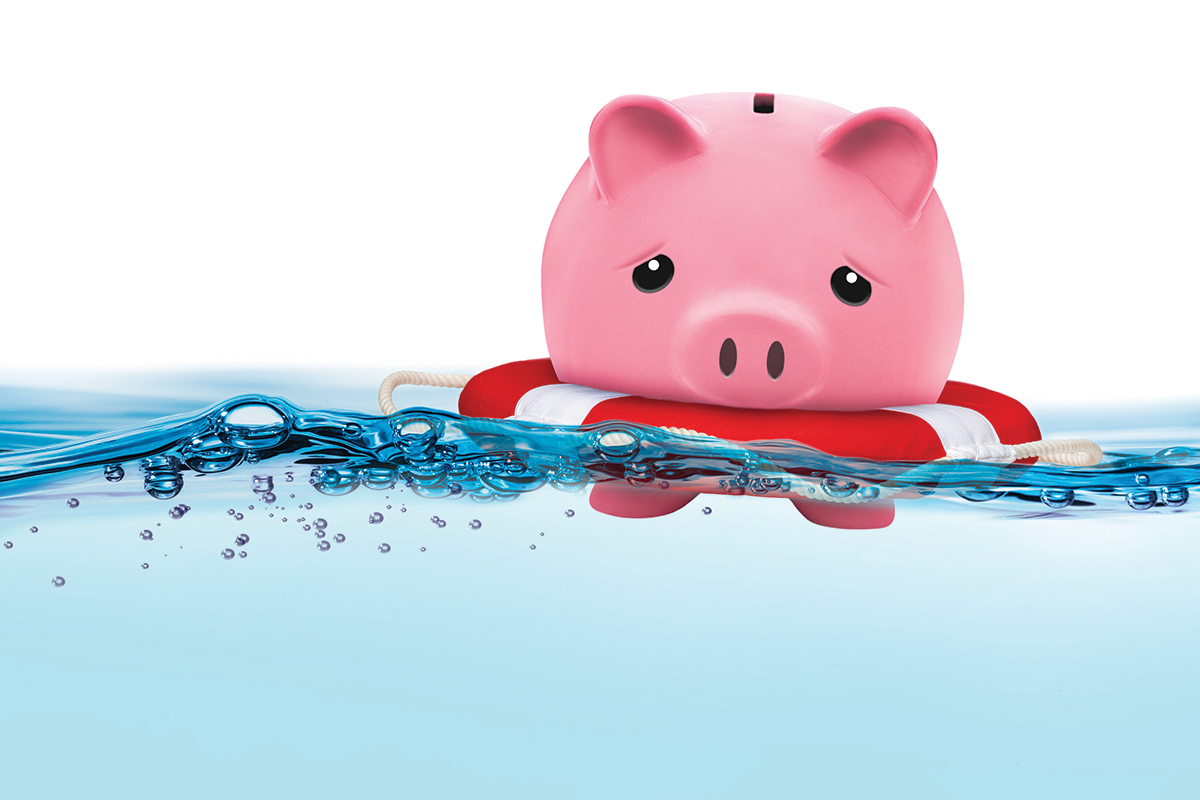This article is taken from our autumn 2020 edition of Equinox. You can view the full version here.
We thought that interest rates couldn’t possibly go any lower. But along came COVID-19 to prove us wrong, and the Bank of England created another record, cutting the rate to almost zero at 0.1%.
With businesses and individuals alike sitting on record levels of cash, I believe that negative rates are a real possibility. I can’t imagine that, when most financial institutions were designing their systems, they ever contemplated the possibility of entering minus figures into the interest rate box. Yet, the Bank of England has written to all institutions to tell them that negative interest rates are now under active review and that their systems need to be able to process that scenario.
Regardless of whether we see negative rates or not, it is my opinion that interest rates are not going up anytime soon and also that it’s highly likely that we could still see rates at 1% or below 10 years from now. That would mean rates had been below 1% for two decades – something no one would have predicted. This might sound great for borrowers, but it does present challenges for savers. However, if families work together where possible, significant benefits can be achieved.
Let’s look at a hypothetical situation of parents with one son, where everyone has all of their financial arrangements with Big Bank plc. The interest rates assumed are not untypical of those available today (although actual market rates can vary significantly from the ones we have used in the example); with the savings quoted being in simple annual terms.
Mum and Dad have the following:
- Instant access cash account – £30,000 (interest rate 0.60% pa)
- Long term deposit that they are thinking about tying up for five years – £50,000 (interest rate 1.40% pa fixed)
The son, on the other hand, has the following:
- Mortgage – £270,000 (interest at 4% pa – £10,800, 90% loan to value based on a property value of £300,000)
- Car loan – £10,000 (interest at 6% pa – £600)
- Credit card – £10,000 (interest at 20% pa – £2,000)
My observations on this are:
- The parents were about to deposit money for five years with Big Bank plc to receive interest of just 1.40% gross. That same money was then effectively being loaned by the bank to their son to whom they were charging between 4% and 20%, thus making a huge profit.
- What if the parents decided to cut out the middleman and lend £50,000 directly to their son, charging him 2% pa interest, giving them an extra £300 pa income compared to them having their money on deposit with the bank.
- The son could then consider reducing his debt. For instance, repaying his credit card would see his interest payments drop from £2,000 with Big Bank plc to just £200 with his parents, saving him £1,800 pa. He could then structure additional capital payments so that the £10,000 was repaid within five years. He could also look to repay the car loan, saving a further £400 in interest, again structuring the repayments over five years.
- The remaining £30,000 could be used to reduce the mortgage and, interestingly, this is actually where the greatest difference can be made; as although the interest rate is the lowest, the debt is the biggest. The smaller loan amount would reduce his borrowing from 90% loan to value to 80% loan to value (again based on a property value of £300,000), allowing him to refinance at a reduced rate. In this example I’ve assumed just 1.5%. The interest on the mortgage would now be £240,000 at 1.5%, which works out at £3,600 pa.
- Interest on the £30,000 loan to the parents at 2% is £600. So, the total of his new mortgage with Big Bank Plc and the loan from mum and dad totals up to £4,200, saving a whopping £6,600 in year one compared to the previous mortgage that was costing £10,800. The interest payable to the bank will reduce in subsequent years as regular capital repayments reduce the value of the loan.
In summary, the total saved in the first year from the mortgage, credit card and car loan interest payments is £8,800, and Mum and Dad are still better off by £300.
Some of this annual saving could then be directed into savings vehicles for the son, such as an ISA or a pension, for example. In this scenario the son has no emergency fund to speak of, so building up a sufficient pot within a cash ISA, even at a low interest rate, would be beneficial. However, as rates are acknowledged to be low an investment strategy could be beneficial over the longer term; for example, a stocks and shares ISA or a pension. The key advantage to a pension is the tax relief, as irrespective of his taxpayer status, at least 20% is added to his personal contributions (up to the annual and lifetime allowances) and provides a nest egg for the future. However, the ISA allows for more flexibility if access is required in the shorter term.
It is truly amazing how much more families can achieve with their money when they work together. However, the example used here is simply to illustrate the financial benefits of looking at the circumstances of a family collectively and does not constitute advice. When considering such strategies it is important to check whether any penalties apply on early repayment of any debt and obtain professional help. It is equally important to understand the implications of making gifts from capital to the next generation. Equilibrium is not authorised to provide advice on debt counselling; but we can refer you to a professional partner should this be needed.
If this hypothetical scenario is a familiar one, then watching the recording of our latest live online event covering inheritance tax and intergenerational planning could well be of benefit for you and your family.
Disclaimer: The content contained in this blog represents represents the opinions of Equilibrium Investment Management LLP (EIM) and Equilibrium Financial Planning LLP (EFP). The commentary in no way constitutes a solicitation of investment advice. It should not be relied upon in making investment decisions and is intended solely for the entertainment of the viewer. Past performance is never a guide to future performance. Investments may (will) fall as well as rise and you may not get back your original investment.’





